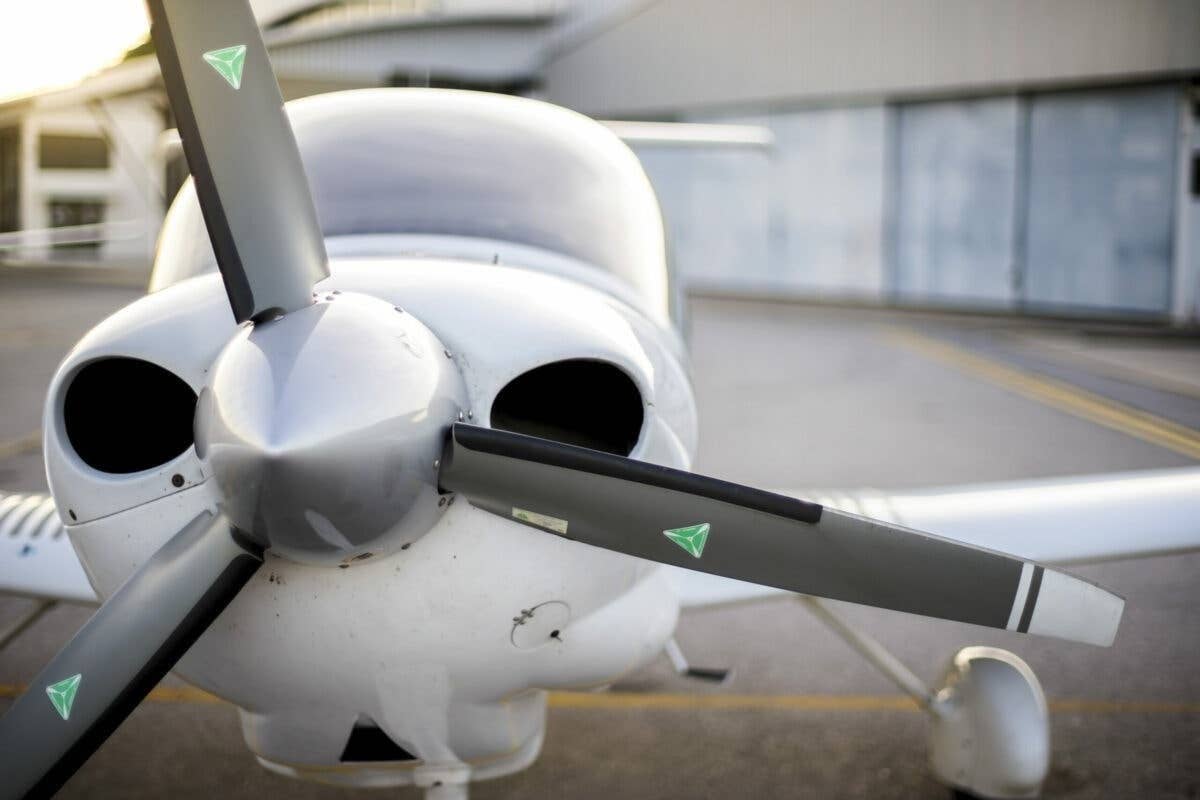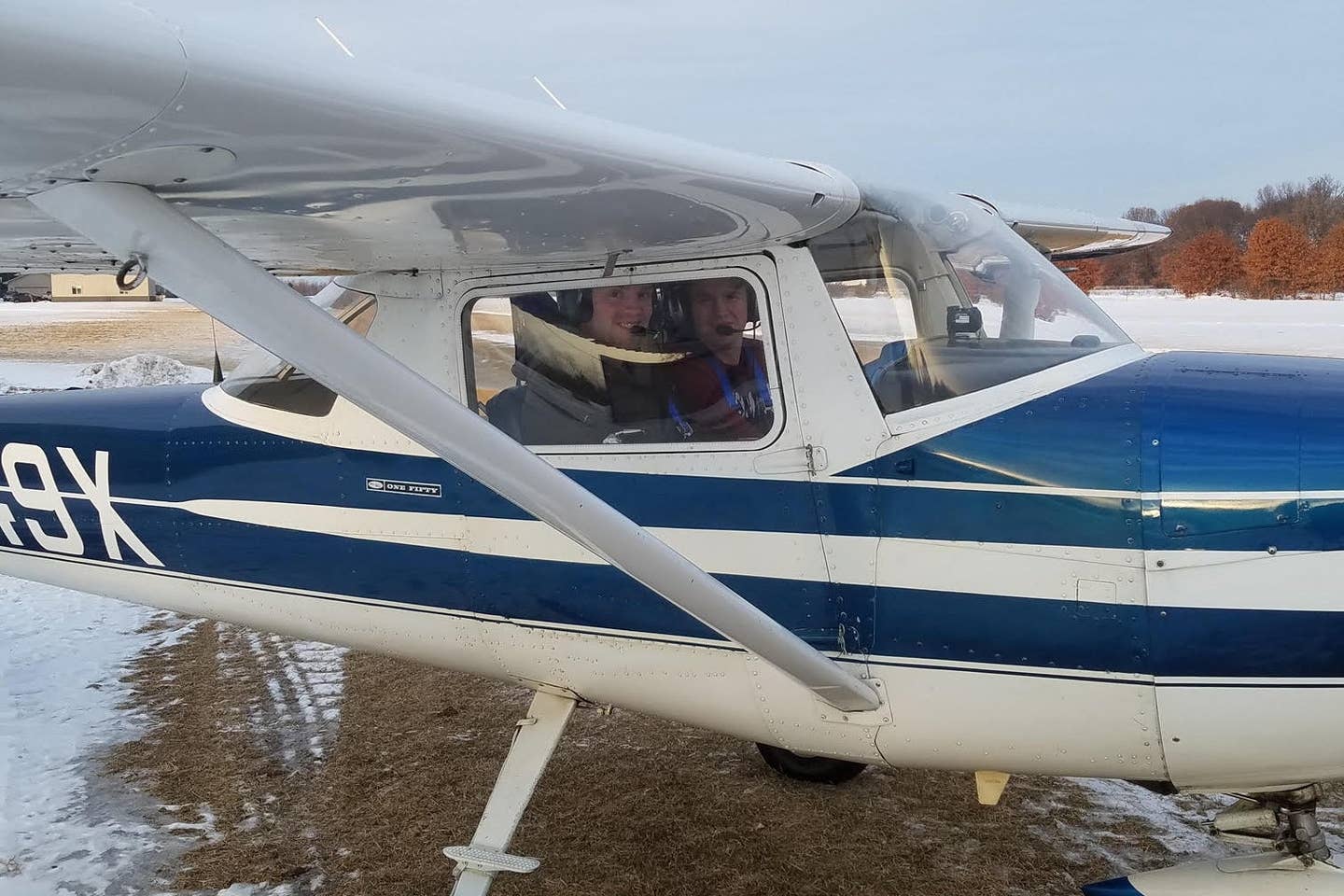
It is no wonder Cessna called the revolutionary tricycle landing gear Land-O-Matic when the company introduced it on the Cessna 172 in 1956. Tricycle equipped airplanes are simply easier to land. But that doesn’t mean that tailwheel aircraft are not worth flying. With the increased nose up angle of the fuselage, the propeller is further from the ground, so taildraggers are much better suited for grass, dirt and gravel runways. They often also have good slow flight characteristics, and can land and take off in short distances. That’s why many small airplanes that land on the ground in Alaska (there are plenty of seaplanes up there) have tailwheels. These types of airplanes are also worth flying because they are so unforgiving that flying them will force you to become a better pilot.
I was pondering the value of tailwheel flight as I was sitting in the back of an airliner the other day. I flinched when the pilot botched what should have been a perfect landing. The approach was stable, the touchdown smooth, but once we were on the ground the airplane started moving left and right as if we’re going down a slope strapped to downhill skis. I could visualize the pilot up front, pushing rudders left and right putting way more force into them than necessary. Some airline pilots could learn a lot from taking a couple of flights in a tailwheel-equipped airplane.
Taxiing a taildragger requires the same crosswind input on the ground as any aircraft – turn the yoke or stick into a headwind and away from a tailwind. The only difference is that consequences of incorrect inputs are more likely to be noticeable in the tailwheel because of its tendency to want to rotate around its center of gravity – resulting in a dramatic phenomenon called a ground loop. The reason this happens is because the CG is aft of the main gear – in tricycle airplanes it’s forward. The stick/yoke should be full aft to maximize the weight and controllability of the tailwheel, unless there is a strong tailwind in which case it should be neutral.
To add to the challenge on the ground, the nose is so high on many taildraggers that you can’t see forward unless you make a slalom course on the taxiway and look out the side window. Fortunately for me, most of my tailwheel time is in a Cessna 170, which has excellent forward visibility on the ground. Regardless of the type of taildragger, the key is to continually make small corrections and not allow the airplane to veer even inches away from its intended path.
The takeoff phase in a tailwheel really teaches left turning tendencies. Because of the increased angle of the fuselage, P-factor (caused by differential angles of the ascending and descending propeller blades) is much more noticeable than in a tricycle aircraft. As the aircraft picks up speed, the aircraft will yaw to the left and the rudder dance begins. Quick, small, timely corrections are needed to keep the aircraft on the centerline. Overcorrection will lead to loss of control. Only experience and intense focus will determine the correct amount.
The tailwheel is then lifted off the ground by pushing the yoke/stick forward. If gyroscopic precession was a mystery before, it will now become clear as day VFR. As forces are applied essentially at the top of the spinning propeller, the resulting 90-degree force makes the aircraft want to veer to the left. So expect to apply quite a bit of right rudder to keep the airplane going down the centerline of the runway – but then again, not too much!
Once in the air, the taildragger flies just like any other aircraft. But get ready to dance on the rudder pedals again on short final. The rudder of a tailwheel aircraft coming in to land should be moving like the wagging tail of a happy dog. A straight and stable the approach increases the chances of a perfect landing.
Now to the touchdown. I’ll never forget my first few landings in my 170. Ironically, they happened at the airport in Peoria, Ill. – PIA. I called them kangaroo landings for a reason. I didn’t think an airplane could bounce like that. We were working on wheel landings – the two main wheels touch first and the tailwheel is held off until the speed is bled off on the runway. These types of landings require forward pressure on the yoke and power to idle immediately after the touchdown to prevent a bounce.
This technique was very counterintuitive for me. I kept relaxing the pressure on the yoke once I touched down. As the tailwheel descended to the ground the angle of attack of the wings increased and since the wings weren’t stalled the plane responded by taking off again. The mains hit, then the tail and we continued like a bucking bronco down the runway. It was quite a humbling experience and I applied full power to get away from the ground and save my plane.
The same thing happened several times. It just didn’t feel right to push the yoke forward. I felt that the propeller could hit the ground. But eventually I got it. I learned to love wheel landings and was eventually able to kiss the ground with the mains and slowly lower the tail.
With a three–point landing, the targeted approach speed and the flare need to be right on the money. The wings must be stalled at the touch down and as soon as the wheels touch, power goes to idle and the stick/yoke in the far aft position. Otherwise – kangaroo. The kangaroo can be saved with some power and holding the airplane off the ground until it reaches the appropriate attitude, but a better solution is an immediate go around.
And with the airplane on the ground, the rudder dance continues until the airplane comes to a complete stop.
These techniques have so far prevented me from having the dreaded experience of ground looping. There is much debate about what’s best in a crosswind situation – wheel landing or three-point. I always did wheel landings and managed to get the 170 down safely with as much as a 25 knot, 90-degree crosswind. But some argue that the three-point approach is better since you touch down with less speed. I say, if you get yourself into a tough crosswind situation, do whatever you’re most comfortable doing. And, whether you have strong winds or calm air, keep controlling the airplane until the mixture is pulled and the propeller is stopped.
If the airline captain from the other day had been landing a taildragger instead of a Boeing 747, there is no doubt in my mind that there would have been a couple of hundred people at LAX on a ground loop roller coaster. Whatever aircraft you fly on a regular basis, a few hours in a tailwheel is guaranteed to make you a better pilot. Unlike aircraft with tricycle gear, taildraggers will let you know if you’re doing something wrong.

Sign-up for newsletters & special offers!
Get the latest FLYING stories & special offers delivered directly to your inbox


![[PILOT AND SNELLEN CHART PIC]](https://www.flyingmag.com/uploads/2022/11/2022-FlyingMag.com-Native-Advertising-Main-Image--scaled.jpeg?auto=webp&auto=webp&optimize=high&quality=70&width=1440)



